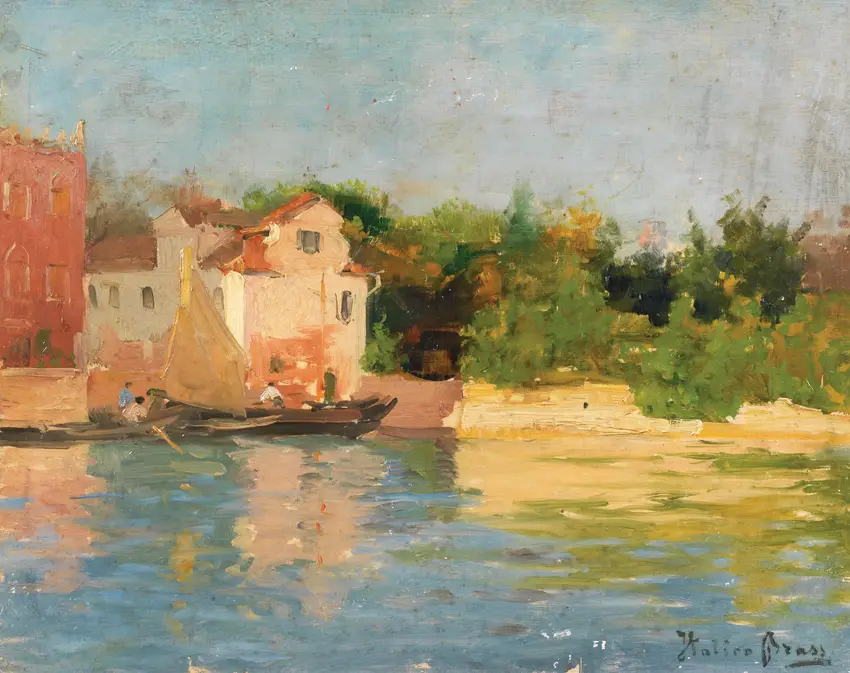Italico Brass
Italico Brass (1870–1943), Italian, A painter of vibrant light and atmospheric depth, his work captured the fleeting beauty of Venetian canals, sun-dappled gardens, and bustling piazzas with a lyrical touch. Though often overshadowed by his more famous contemporaries, his canvases reveal a masterful balance of Impressionist spontaneity and classical precision. Born in Gorizia, then part of the Austro-Hungarian Empire, he absorbed the chromatic intensity of the Venetian tradition while infusing it with a modern sensibility. His brushwork—loose yet deliberate—conveyed the shimmer of water and the warmth of Mediterranean sun with an almost tactile quality.
Brass found inspiration in everyday scenes: fishermen mending nets, gondoliers navigating narrow waterways, or the play of shadows on weathered facades. Unlike the stark realism of some peers, his paintings exuded a poetic warmth, often bathing subjects in a golden haze. Critics noted his ability to evoke mood through color, a skill honed during studies in Munich and Paris, where he encountered both Symbolist and plein air techniques. Though he exhibited widely, including at the Venice Biennale, commercial success came late, partly due to his reluctance to cater to trends.
Today, his works are prized for their evocative stillness—a bridge between 19th-century Romanticism and 20th-century modernism. Whether depicting a misty lagoon at dawn or a sunlit courtyard, Brass’s art invites viewers to linger, offering not just a scene but a sensation.
Brass found inspiration in everyday scenes: fishermen mending nets, gondoliers navigating narrow waterways, or the play of shadows on weathered facades. Unlike the stark realism of some peers, his paintings exuded a poetic warmth, often bathing subjects in a golden haze. Critics noted his ability to evoke mood through color, a skill honed during studies in Munich and Paris, where he encountered both Symbolist and plein air techniques. Though he exhibited widely, including at the Venice Biennale, commercial success came late, partly due to his reluctance to cater to trends.
Today, his works are prized for their evocative stillness—a bridge between 19th-century Romanticism and 20th-century modernism. Whether depicting a misty lagoon at dawn or a sunlit courtyard, Brass’s art invites viewers to linger, offering not just a scene but a sensation.
-

Venice, Punta dei Giardini
Italico Brass (Italian, 1870–1943)A tranquil Venetian scene where light and water merge, capturing the quiet magic of a hidden corner.
